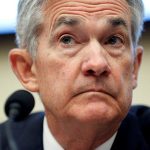
Powell signaled that the Fed is now prepared to lower interest rates, aligning with market expectations for a series of rate cuts. His remarks suggest that the Fed’s dual mandate of price stability and maximum employment is increasingly skewed towards supporting the labor market, even as inflation trends towards the Fed’s 2% target.
During the speech, Powell did not push back against market expectations of multiple rate cuts.
“The time has come for policy to adjust. The direction of travel is clear, and the timing and pace of rate cuts will depend on incoming data, the evolving outlook, and the balance of risks,” he said.
While he was not more dovish than the market, Powell “didn’t utter any hawkish views whatsoever to alter the market’s dovish expectations for several rate cuts,” strategists at Yardeni Research said in a note.
The federal funds rate (FFR) futures market currently indicates a total of 100 basis points in cuts, bringing the rate down to 4.25% by year-end. Projections suggest the FFR could decrease further to 3.00% by the end of next year.
However, Yardeni strategists believe Powell’s comments on Friday may have been “overly” dovish, and that his latest pivot “won’t be his last.”
They note that while inflation has been trending downwards, it may not be wise to ease policy too quickly, especially with the labor market remaining relatively strong.
Powell’s emphasized that “upside risks to inflation have diminished,” while “the downside risks to employment have increased.” This reflects the Fed’s view that the labor market, which has cooled from its previously overheated state, is now a greater concern than the possibility of inflation reaccelerating.
But should inflationary pressures resurface, it could leave the Fed vulnerable, according to Yardeni.
The strategists point out that just a month ago, Powell was emphasizing the need to maintain a restrictive policy stance to keep demand in line with supply and to manage inflationary pressures.
At that time, Powell mentioned the Fed’s dual mandate of price stability and maximum employment repeatedly, indicating a balanced approach. In contrast, at Jackson Hole, Powell mentioned the mandate only twice, placing greater emphasis on the need to support the labor market.
However, that stance could require yet another pivot from Powell and the Fed if economic conditions change again, Yardeni strategists cautioned.
“In our opinion, Powell was too dovish on Friday, needlessly so, because the labor market has simply normalized after pandemic-related effects rather than cooled in response to economic weakness,” they wrote.
To read the full article, Click Here

